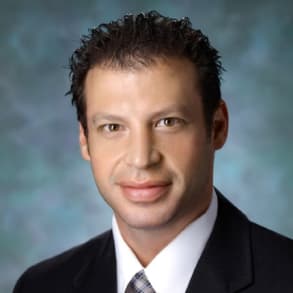Johns Hopkins neurosurgeon Judy Huang discusses the two cohorts of patients who benefit most from neuroplastic surgery and how this new specialty offers single stage operations in brain surgery cases that previously required two procedures.
Learn more about Johns Hopkins Neuroplastic Surgery and its director, Chad Gordon, D.O., at https://www.hopkinsmedicine.org/neuroplastic-surgery/
I do think that there are two cohorts of patients that can benefit from the neuro plastic surgery approach. So the first are the complicated patients who had their neurosurgical procedure somewhere else. You know, outside of Hopkins and sometimes they have radiation and they have ah, wound breakdown issue or a wound infection. Or they had their d compressive hemi craniectomy, you know, somewhere else and they need to be reconstructed. So you know, somebody who's basically had their definitive procedure somewhere else and has had a problem so we can help with those patients because our armamentarium is greater so we can use local tissue flaps. We can do scalp rotations. We have a variety of techniques the harvest autologous tissue to help with these very challenging soft tissue defects and scalp wounds. Um, and our approaches is about achieving symmetry. And we we really have different, um, tools to do that. So that's one cohort of patients that I think really benefits. And that waas that was the focus of our work in the beginning when we first started this. Okay, it really was this challenging group of patients and taking care of those patients opened our eyes to all the different problems that exist and gave us experience so that we learned from our our approach and we learned about the pitfalls. So taking those experiences and being able to apply that to the second cohort of patients is really beneficial. So the second cohort of patients in my mind are the ones who Onley just found out. They need a craniotomy for something, whether it's a craniotomy, foramen ngoma, you know, because there's dural involvement and the skull is involved, or whether it's some like a vascular problem, where they need a craniotomy that can result in temporal hollowing, which is very deformed into them. Because it looks like an indentation on the side of the head on Diz, it can be disfiguring. You know, when somebody learns that they need to have some kind of procedure like that and they come to us, we think about that. So it's not that we're focused. We are focused definitely on achieving the best neurologic outcome that we can. But we also think about how can we achieve the best aesthetic outcome that we can from a neural plastic surgery view. So that means that even though yes, the critical portion. That in my mind is, of course, the intracranial work and making sure they don't have a stroke making sure that they are, you know, as perfect neurologically as they can be. But to also emphasize that it's just as important to them in terms of the patient outcome. It's just it's important to them that they wake up from surgery and look the same as they did before surgery. And, you know, I would say, for some patients, that's even more important. One more thing that we have now taken this to the point where, instead of fixing a problem after its developed, we preemptively avoid the problem so that there are people actually who are undergoing single stage operations that previously would have needed to separate operations to take care of the problem so that there are there. Actually, we have. We have identified identified people who actually we can spare an extra operation in




